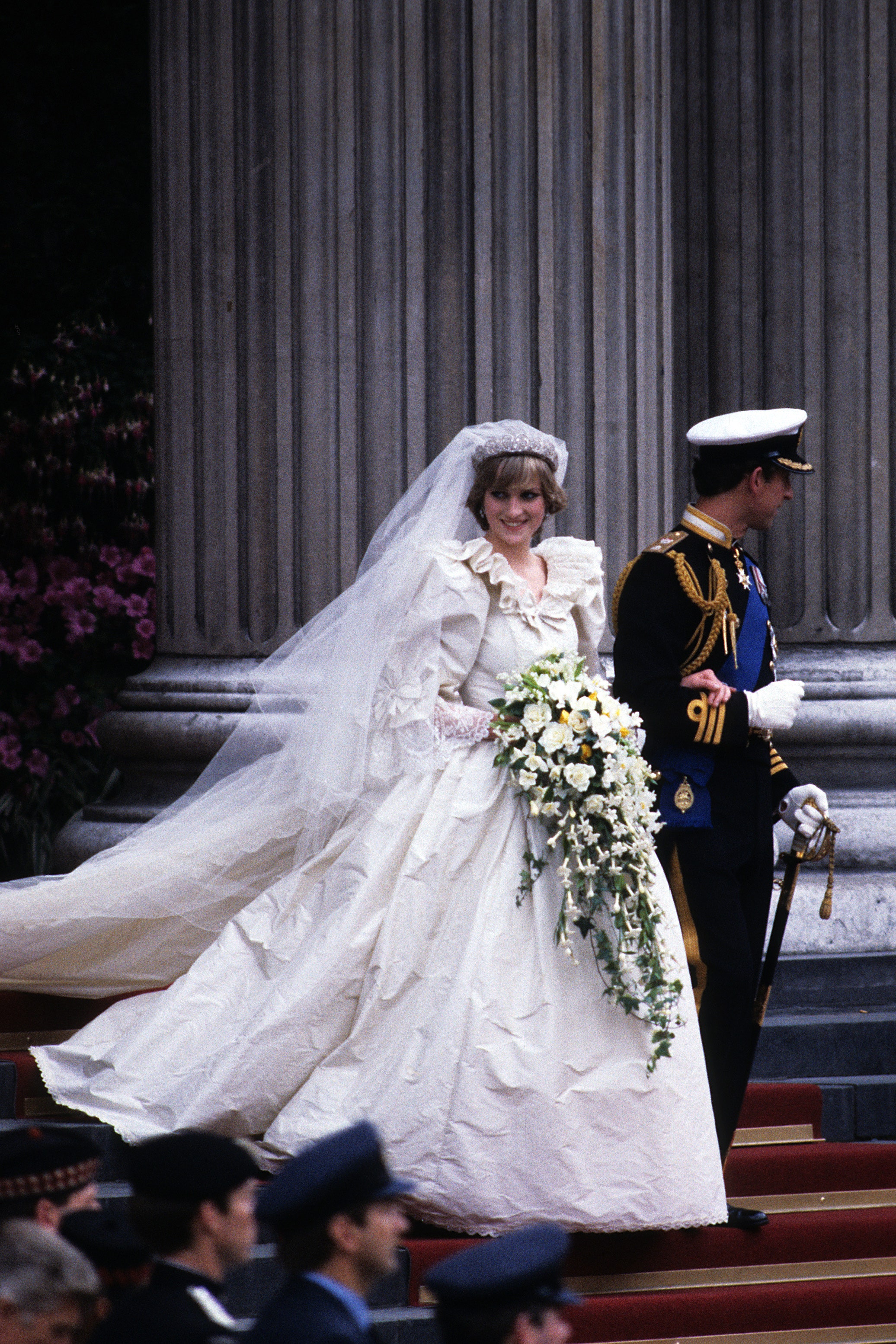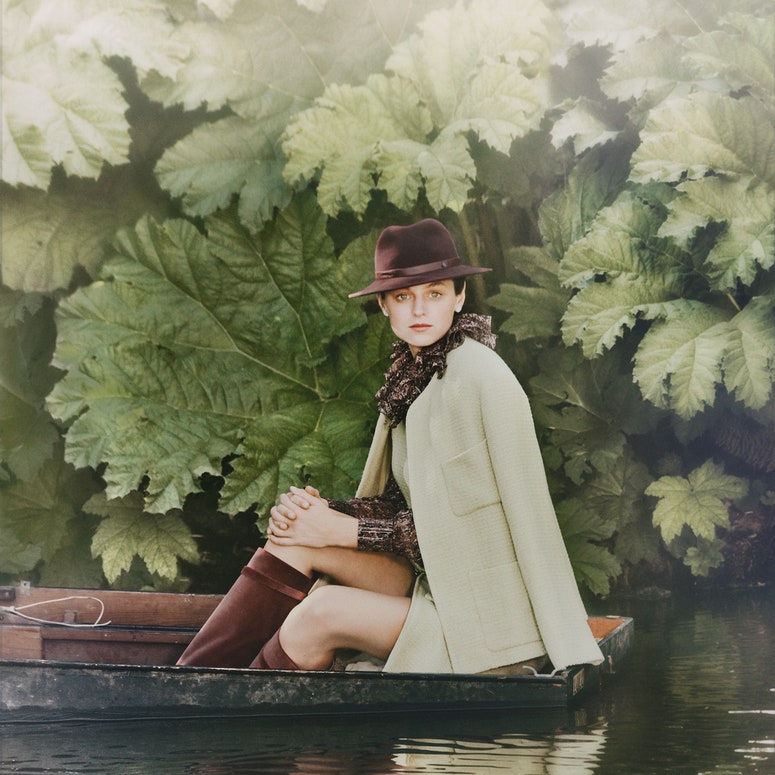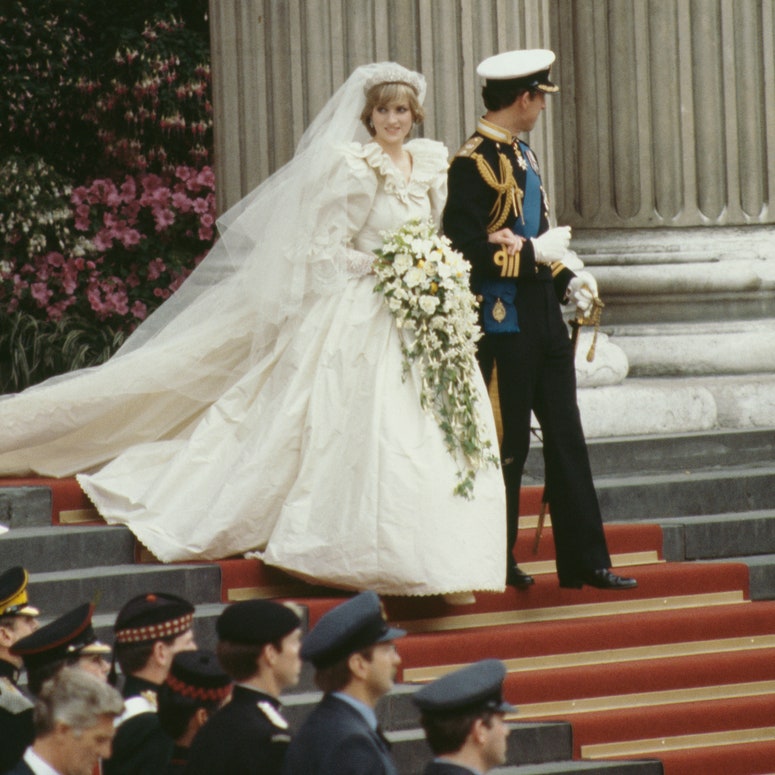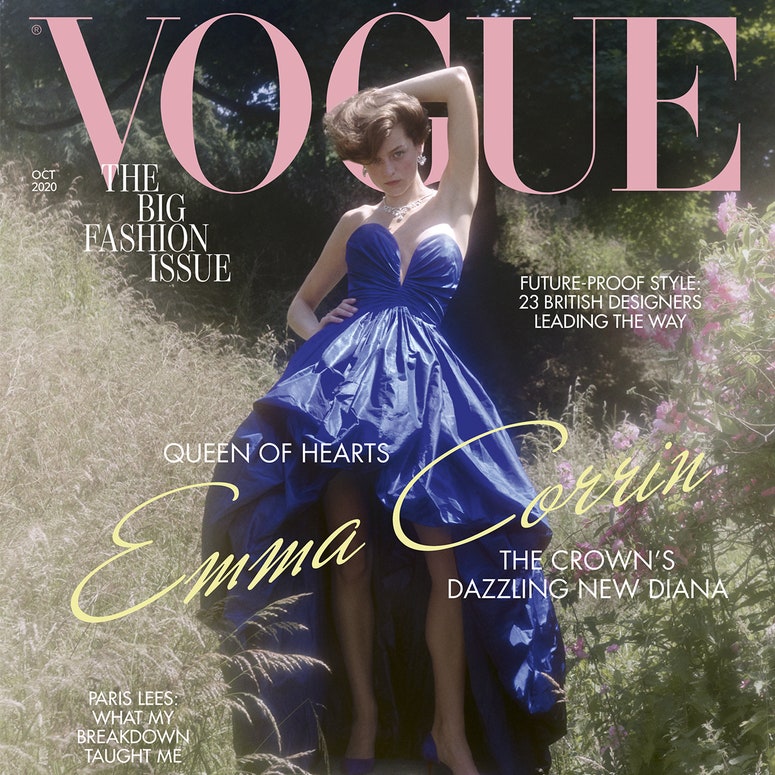“It was all about drama and making Diana a fairytale princess,” Elizabeth Emanuel, one half of the design duo behind the Princess of Wales’s wedding dress, tells British Vogue. “The gown was typical of early ’80s style – overblown, romantic, flouncy – but we had to get it right because we knew it would go down in history.” The pressure for Elizabeth and her then-partner David, who formed their namesake brand, Emanuel, fresh out of fashion college, was on. “It was almost an extension of our final show,” says Elizabeth, smiling at the memory of the “new kids on the block” being thrust into the spotlight and tasked with one of the most important British fashion commissions of all time.
The sudden exposure meant a close bond was forged between the nursery teacher-turned-princess and the fashion industry newcomers, who were all of a similar age. “We had no protection,” Elizabeth reflects on Buckingham Palace’s decision to announce Emanuel as the London label behind the dress prior to the wedding (nowadays, a press release is published as the first photographs of royal brides are published). But, despite the stress of dodging incessant paparazzi camped outside the label’s Brook Street showroom, Diana was never anything but “wonderful and sweet”, as the trio set to work on creating a resplendent gown that was, above all, Lady Di.
“She would always run upstairs to say hello to the seamstresses,” recounts Elizabeth of the young royal’s multiple fittings over the space of three months. “Diana was very caring and never in any way grand. I think she found the whole experience a lot of fun – she stood still for hours and never complained about the pins. She was just fabulous.”
Indeed, it was Diana herself who rang Emanuel HQ to ask the pair whether they would do her the honour of designing her wedding dress to marry Prince Charles on 29 July 1981. Elizabeth recounts the moment with amusement: “I was with a client in the showroom and no one was answering the phone in the office,” she explains. “I ran upstairs in annoyance and must have sounded a tad impatient before realising it was Diana. I was in shock! My poor half-dressed client downstairs must have heard so much thumping as David and I celebrated the decision that ultimately changed our lives.”
That semi-clothed client could of course never know the smallest detail about the top-secret commission, which was ultimately finalised on the floor of the showroom, where Diana sat with her mother as the Emanuels presented their sketches. “Diana was still developing her sense of style at the time,” explains Elizabeth. “She left it to us and our brand of new-romanticism.”
One particular silhouette – “tiny waist, big skirts, puffy sleeves” – suited her, but the designers had to make the dress as complex as possible to ensure that replication was impossible. “We had no guidelines or instructions, so we came up with this amazing, completely OTT gown that we knew would stand out on the steps of St Paul’s,” notes Elizabeth.
The Emanuels made multiple toiles – the blueprint of the gown – before cutting the silk-taffeta sourced from Stephen Walters and the silk from Lullingstone Silk Farm, because Diana kept losing weight. Intricacy among all the frou-frou came via the some 10,000 mother of pearl sequins sewed on to the bodice, sleeves and veil from another British supplier, Roger Watson Laces. Employing seamstresses to aid the craftsmanship process would risk exposure, so the designers’ mothers, plus the studio assistant Caroline and her own mum, were enlisted to do the painstaking needlework. It was Elizabeth’s father, meanwhile, who decided how much to charge the royal family: 1,000 guineas. “We would have given it to Diana for free,” confesses the designer. “But that token amount seemed right, and my dad thought it would be romantic to use guineas.”
Rumours that the Emanuels sewed Diana into the dress on the day are false. But the separate 25ft train – the longest in royal history – was secured to her via a carefully crafted mechanism inside her vast skirts, along with a gold horseshoe for luck. The tale of the second dress – on hand in case details of the original were leaked – are true. There was even a spare skirt, should the royal spill coffee on the first. “Racking our brains for things that could go wrong was a game we played,” recounts Elizabeth.
In the end, the Emanuels didn’t need their smelling salts or safety pins, and the mammoth train miraculously stayed put throughout the day. “It was such an awesome, goose-pimple moment seeing Diana in the splendour of the dress,” remembers Elizabeth of watching the princess preparing to leave Clarence House for St Paul’s. “I remember Judith Chalmers talking about the anticipation surrounding the dress on TV against the backdrop of the crowds cheering. Diana kept everyone calm by singing along to the advert jingles. There was so much joy – until she was just about to get into the carriage, then no one talked.”
The only panic-inducing moment came when Diana disembarked from the carriage and the skirts of the voluminous gown looked crushed. “We had prepared for this, but for a millisecond, I was worried about smoothing them out,” Elizabeth recalls of the “huge responsibility” on the designers’ shoulders, and the comedy of watching the ceremony from behind a pillar once their veil and train finessing was complete. All those weeks of locking the gown in a secure safe at night (special shout out to Jim and Bert, the security guards, who watched it 24/7) were over, and the free-spirited fashion statement was in the public domain.
Elizabeth’s favourite photograph of Princess Diana, with the wind catching her veil as she ascended the cathedral steps, seems to sum up the career-defining design experience. “It was like watching a butterfly coming out of its chrysalis,” she muses. “She looked radiant. I think it was a combination of Diana being an amazing person and it being such a happy, remarkable time. It will stay with us forever.”
More from British Vogue:



